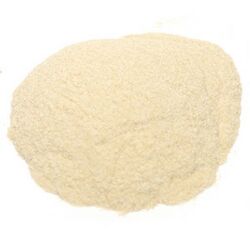Chemistry:Stabiliser (food)
From HandWiki
(Redirected from Chemistry:Stabilizer (food))
Short description: Food additive

Pectin is used as a stabiliser in foods such as yogurt
A stabiliser is an additive to food which helps to preserve its structure. Typical uses include preventing oil-water emulsions from separating in products such as salad dressing; preventing ice crystals from forming in frozen food such as ice cream; and preventing fruit from settling in products such as jam, yogurt and jellies. Some of these food additives may promote the growth of specific microorganisms in the gastrointestinal tract that can ferment them.[1] The following hydrocolloids are the most common ones used as stabilisers:[2]
- alginate
- agar
- carrageen
- cellulose and cellulose derivatives
- gelatin
- guar gum
- gum Arabic
- locust bean gum
- pectin
- starch
- xanthan gum
See also
- Gums and Stabilisers for the Food Industry, a conference series about title subject
References
- ↑ Ostrowski, Matthew P.; La Rosa, Sabina Leanti; Kunath, Benoit J.; Robertson, Andrew; Pereira, Gabriel; Hagen, Live H.; Varghese, Neha J.; Qiu, Ling et al. (April 2022). "Mechanistic insights into consumption of the food additive xanthan gum by the human gut microbiota". Nature Microbiology 7 (4): 556–569. doi:10.1038/s41564-022-01093-0. PMID 35365790.
- ↑ Alan Imeson (2011), Food Stabilisers, Thickeners and Gelling Agents, John Wiley & Sons, ISBN 978-1-4443-6033-2
 |

